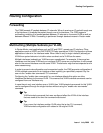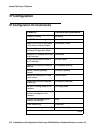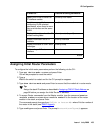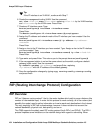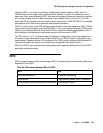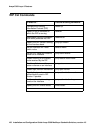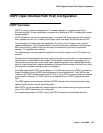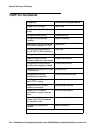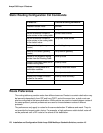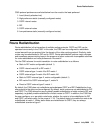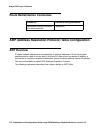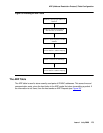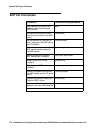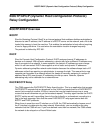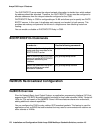
Static Routing Configuration
Issue 1 July 2006 169
Static Routing Configuration
Static Routing Overview
When dynamic routing protocols (RIP or OSPF) are not appropriate, you can manually
configure static routes to indicate the next hop on the path to the final packet destination.
A static route becomes inactive if the interface over which it is defined is disabled. When the
interface is enabled, the static route becomes active again. They are never timed-out, or lost
over reboot, and can only be removed by manual configuration. Deletion (by configuration) of
the IP interface deletes the static routes using this interface as well.
Static routes can only be configured for remote destinations, i.e. destinations that are reachable
via another router as a next hop. The next hop router must belong to one of the directly attached
networks for which the C360 has an IP interface. "Local" static routes, such as those that have
no next hop, are not allowed.
Two kinds of static routes can be configured:
● High Preference static routes which are preferred to routes learned from any routing
protocol
● Low Preference static routes which are used temporarily until the route is learned from a
routing protocol. By default, a static route has Low Preference.
Static routes can be advertised by routing protocols (i.e., RIP, OSPF) as described under Route
redistribution.
Static routes also support load-balancing similar to OSPF. A static route can be configured with
multiple next hops so that traffic is split between these next hops.
This can be used for example to load-balance traffic between several firewalls which serve as
the default gateway.



